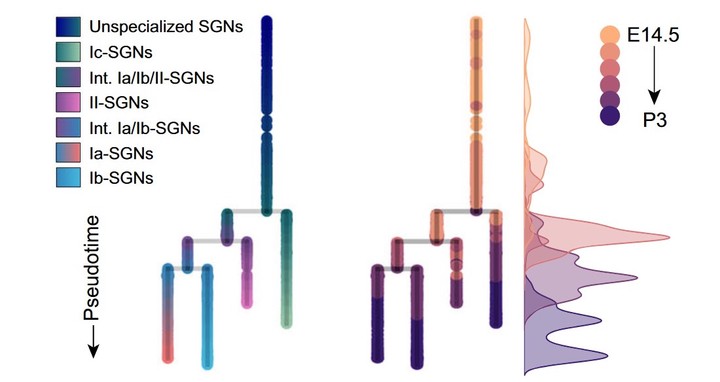



Different types of spiral ganglion neurons (SGNs) are essential for auditory perception by transmitting complex auditory information from hair cells (HCs) to the brain. Here, we use deep, single cell transcriptomics to study the molecular mechanisms that govern their identity and organization in mice. We identify a core set of temporally patterned genes and gene regulatory networks that may contribute to the diversification of SGNs through sequential binary decisions and demonstrate a role for NEUROD1 in driving specification of a Ic-SGN phenotype. We also find that each trajectory of the decision tree is defined by initial co-expression of alternative subtype molecular controls followed by gradual shifts toward cell fate resolution. Finally, analysis of both developing SGN and HC types reveals cell-cell signaling potentially playing a role in the differentiation of SGNs. Our results indicate that SGN identities are drafted prior to birth and reveal molecular principles that shape their differentiation and will facilitate studies of their development, physiology, and dysfunction. This study chronicles dynamic gene expression in differentiating spiral ganglion neurons from murine embryonic day 14.5 to postnatal stage, establishes their lineage trajectories, and identifies molecular determinants of cell fate decision.